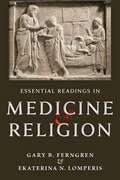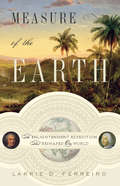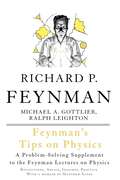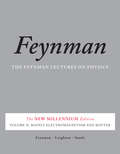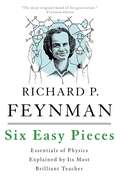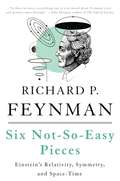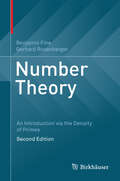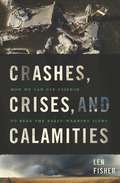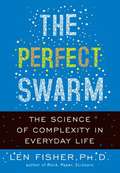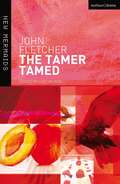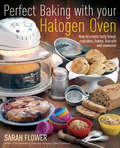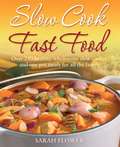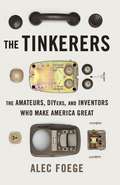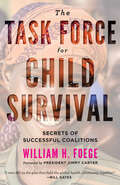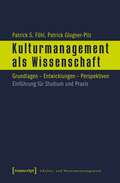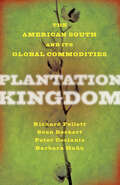- Table View
- List View
Essential Readings in Medicine and Religion
by Gary B. Ferngren Ekaterina N. LomperisGary B. Ferngren and Ekaterina N. Lomperis have gathered a rich collection of annotated primary sources that illustrate the intersection of medicine and religion. Intended as a companion volume to Ferngren;€™s classic Medicine and Religion, which traces the history of the relationship of medicine to religion in the Western world from the earliest ancient Near Eastern societies to the twenty-first century, this useful and extensive sourcebook places each key document in historical context.Drawing from more than 160 texts, the book explores a number of themes, including concepts of health, the causes and cure of disease, medical ethics, theodicy, beneficence, religious healing, consolation, and death and dying. Each chapter begins with an introduction that furnishes a basic historical setting for the period covered. Modern translations, some of which have been made especially for this volume, are used whenever possible. The texts are numbered sequentially within each chapter and preceded by a short introduction to both the author and the subject.Touching on Mesopotamia, Egypt, Israel, Greece, Rome, the European Middle Ages, Islam, early modern Europe, and the modern era, Essential Readings in Medicine and Religion brings a wide range of sources together to expand on the crucial lessons of Medicine and Religion. This book is a useful introduction for all students of history, divinity, medicine, and health.
Essential Readings in Medicine and Religion
by Gary B. Ferngren Ekaterina N. LomperisGary B. Ferngren and Ekaterina N. Lomperis have gathered a rich collection of annotated primary sources that illustrate the intersection of medicine and religion. Intended as a companion volume to Ferngren;€™s classic Medicine and Religion, which traces the history of the relationship of medicine to religion in the Western world from the earliest ancient Near Eastern societies to the twenty-first century, this useful and extensive sourcebook places each key document in historical context.Drawing from more than 160 texts, the book explores a number of themes, including concepts of health, the causes and cure of disease, medical ethics, theodicy, beneficence, religious healing, consolation, and death and dying. Each chapter begins with an introduction that furnishes a basic historical setting for the period covered. Modern translations, some of which have been made especially for this volume, are used whenever possible. The texts are numbered sequentially within each chapter and preceded by a short introduction to both the author and the subject.Touching on Mesopotamia, Egypt, Israel, Greece, Rome, the European Middle Ages, Islam, early modern Europe, and the modern era, Essential Readings in Medicine and Religion brings a wide range of sources together to expand on the crucial lessons of Medicine and Religion. This book is a useful introduction for all students of history, divinity, medicine, and health.
Measure of the Earth: The Enlightenment Expedition That Reshaped Our World
by Larrie D. FerreiroIn the early eighteenth century, at the peak of the Enlightenment, an unlikely team of European scientists and naval officers set out on the world&’s first international, cooperative scientific expedition. Intent on making precise astronomical measurements at the Equator, they were poised to resolve one of mankind&’s oldest mysteries: the true shape of the Earth. In Measure of the Earth, award-winning science writer Larrie D. Ferreiro tells the full story of the Geodesic Mission to the Equator for the very first time. It was an age when Europe was torn between two competing conceptions of the world: the followers of René Descartes argued that the Earth was elongated at the poles, even as Isaac Newton contended that it was flattened. A nation that could accurately determine the planet&’s shape could securely navigate its oceans, giving it great military and imperial advantages. Recognizing this, France and Spain organized a joint expedition to colonial Peru, Spain&’s wealthiest kingdom. Armed with the most advanced surveying and astronomical equipment, they would measure a degree of latitude at the Equator, which when compared with other measurements would reveal the shape of the world. But what seemed to be a straightforward scientific exercise was almost immediately marred by a series of unforeseen catastrophes, as the voyagers found their mission threatened by treacherous terrain, a deeply suspicious populace, and their own hubris.A thrilling tale of adventure, political history, and scientific discovery, Measure of the Earth recounts the greatest scientific expedition of the Enlightenment through the eyes of the men who completed it—pioneers who overcame tremendous adversity to traverse the towering Andes Mountains in order to discern the Earth&’s shape. In the process they also opened the eyes of Europe to the richness of South America and paved the way for scientific cooperation on a global scale.
Feynman's Tips on Physics: Reflections, Advice, Insights, Practice
by Richard P. Feynman Michael A GottliebFeynman's Tips on Physics is a delightful collection of Richard P. Feynman's insights and an essential companion to his legendary Feynman Lectures on Physics With characteristic flair, insight, and humor, Feynman discusses topics physics students often struggle with and offers valuable tips on addressing them. Included here are three lectures on problem-solving and a lecture on inertial guidance omitted from The Feynman Lectures on Physics. An enlightening memoir by Matthew Sands and oral history interviews with Feynman and his Caltech colleagues provide firsthand accounts of the origins of Feynman's landmark lecture series. Also included are incisive and illuminating exercises originally developed to supplement The Feynman Lectures on Physics, by Robert B. Leighton and Rochus E. Vogt.Feynman's Tips on Physics was co-authored by Michael A. Gottlieb and Ralph Leighton to provide students, teachers, and enthusiasts alike an opportunity to learn physics from some of its greatest teachers, the creators of The Feynman Lectures on Physics.
Feynman's Tips on Physics: Reflections, Advice, Insights, Practice
by Richard P. Feynman Michael A GottliebFeynman's Tips on Physics is a delightful collection of Richard P. Feynman's insights and an essential companion to his legendary Feynman Lectures on Physics With characteristic flair, insight, and humor, Feynman discusses topics physics students often struggle with and offers valuable tips on addressing them. Included here are three lectures on problem-solving and a lecture on inertial guidance omitted from The Feynman Lectures on Physics. An enlightening memoir by Matthew Sands and oral history interviews with Feynman and his Caltech colleagues provide firsthand accounts of the origins of Feynman's landmark lecture series. Also included are incisive and illuminating exercises originally developed to supplement The Feynman Lectures on Physics, by Robert B. Leighton and Rochus E. Vogt.Feynman's Tips on Physics was co-authored by Michael A. Gottlieb and Ralph Leighton to provide students, teachers, and enthusiasts alike an opportunity to learn physics from some of its greatest teachers, the creators of The Feynman Lectures on Physics.
The Feynman Lectures on Physics, Vol. II: The New Millennium Edition: Mainly Electromagnetism and Matter
by Richard P. Feynman Robert B. Leighton Matthew Sands"The whole thing was basically an experiment," Richard Feynman said late in his career, looking back on the origins of his lectures. The experiment turned out to be hugely successful, spawning publications that have remained definitive and introductory to physics for decades. Ranging from the basic principles of Newtonian physics through such formidable theories as general relativity and quantum mechanics, Feynman's lectures stand as a monument of clear exposition and deep insight.Timeless and collectible, the lectures are essential reading, not just for students of physics but for anyone seeking an introduction to the field from the inimitable Feynman.
Six Easy Pieces: Essentials of Physics Explained by Its Most Brilliant Teacher
by Richard P. Feynman Robert B. Leighton Matthew Sands"If one book was all that could be passed on to the next generation of scientists it would undoubtedly have to be Six Easy Pieces."- John Gribbin, New ScientistIt was Richard Feynman's outrageous and scintillating method of teaching that earned him legendary status among students and professors of physics. From 1961 to 1963, Feynman delivered a series of lectures at the California Institute of Technology that revolutionized the teaching of physics around the world. Six Easy Pieces, taken from these famous Lectures on Physics, represent the most accessible material from the series.In these classic lessons, Feynman introduces the general reader to the following topics: atoms, basic physics, energy, gravitation, quantum mechanics, and the relationship of physics to other topics. With his dazzling and inimitable wit, Feynman presents each discussion with a minimum of jargon. Filled with wonderful examples and clever illustrations, Six Easy Pieces is the ideal introduction to the fundamentals of physics by one of the most admired and accessible physicists of modern times.
Six Easy Pieces: Essentials of Physics Explained by Its Most Brilliant Teacher
by Richard P. Feynman Robert B. Leighton Matthew SandsLearn from a Nobel Peace Prize winner in this entertaining and educational guide to physics, written for the enjoyment of curious beginners and aspiring scientists alike.It was Richard Feynman's outrageous and scintillating method of teaching that earned him legendary status among students and professors of physics. From 1961 to 1963, Feynman delivered a series of lectures at the California Institute of Technology that revolutionized the teaching of physics around the world. Six Easy Pieces, taken from these famous Lectures on Physics, represent the most accessible material from the series.In these classic lessons, Feynman introduces the general reader to the following topics: atoms, basic physics, energy, gravitation, quantum mechanics, and the relationship of physics to other topics. With his dazzling and inimitable wit, Feynman presents each discussion with a minimum of jargon. Filled with wonderful examples and clever illustrations, Six Easy Pieces is the ideal introduction to the fundamentals of physics by one of the most admired and accessible physicists of modern times."If one book was all that could be passed on to the next generation of scientists it would undoubtedly have to be Six Easy Pieces."- John Gribbin, New Scientist
Six Not-So-Easy Pieces: Einstein's Relativity, Symmetry, and Space-Time
by Richard P. Feynman Robert B. Leighton Matthew SandsSix lectures, all regarding the most revolutionary discovery in twentieth-century physics: Einstein's Theory of Relativity. No one--not even Einstein himself--explained these difficult, anti-intuitive concepts more clearly, or with more verve and gusto, than Feynman.
Six Not-So-Easy Pieces: Einstein's Relativity, Symmetry, and Space-Time
by Richard P. Feynman Robert B. Leighton Matthew SandsNo twentieth-century American scientist is better known to a wider spectrum of people than Richard P. Feynman (1918-1988) -- physicist, teacher, author, and cultural icon. His autobiographies and biographies have been read and enjoyed by millions of readers around the world, while his wit and eccentricities have made him the subject of TV specials and even a theatrical film. The spectacular reception of the book and audio versions of Feynman's Six Easy Pieces (published in 1995) resulted in a worldwide clamor for "More Feynman! More Feynman!" The outcome is these six additional lectures, drawn from the celebrated three-volume Lectures on Physics. Though slightly more challenging than the first six, these lectures are more focused, delving into the most revolutionary discovery in twentieth-century physics: Einstein's Theory of Relativity. No single breakthrough in twentieth-century physics (with the possible exception of quantum mechanics) changed our view of the world more than that of Einstein's discovery of relativity. The notions that the flow of time is not a constant, that the mass of an object depends on its velocity, and that the speed of light is a constant no matter what the motion of the observer, at first seemed shocking to scientists and laymen alike. But, as Feynman shows so clearly and so entertainingly in the lectures chosen for this volume, these crazy notions are no mere dry principles of physics, but are things of beauty and elegance. No one -- not even Einstein himself -- explained these difficult, anti-intuitive concepts more clearly, or with more verve and gusto, than Richard Feynman.
Number Theory: An Introduction via the Density of Primes (De Gruyter Textbook Ser.)
by Benjamin Fine Gerhard RosenbergerNow in its second edition, this textbook provides an introduction and overview of number theory based on the density and properties of the prime numbers. This unique approach offers both a firm background in the standard material of number theory, as well as an overview of the entire discipline. All of the essential topics are covered, such as the fundamental theorem of arithmetic, theory of congruences, quadratic reciprocity, arithmetic functions, and the distribution of primes. New in this edition are coverage of p-adic numbers, Hensel's lemma, multiple zeta-values, and elliptic curve methods in primality testing.Key topics and features include:A solid introduction to analytic number theory, including full proofs of Dirichlet's Theorem and the Prime Number TheoremConcise treatment of algebraic number theory, including a complete presentation of primes, prime factorizations in algebraic number fields, and unique factorization of idealsDiscussion of the AKS algorithm, which shows that primality testing is one of polynomial time, a topic not usually included in such textsMany interesting ancillary topics, such as primality testing and cryptography, Fermat and Mersenne numbers, and Carmichael numbersThe user-friendly style, historical context, and wide range of exercises that range from simple to quite difficult (with solutions and hints provided for select exercises) make Number Theory: An Introduction via the Density of Primes ideal for both self-study and classroom use. Intended for upper level undergraduates and beginning graduates, the only prerequisites are a basic knowledge of calculus, multivariable calculus, and some linear algebra. All necessary concepts from abstract algebra and complex analysis are introduced where needed.
Crashes, Crises, and Calamities: How We Can Use Science to Read the Early-Warning Signs
by Len FisherWhy do certain civilizations, societies, and ecosystems collapse? How does the domino effect relate to the credit crunch? When can mathematics help explain marriage? And how on earth do toads predict earthquakes? The future is uncertain. But science can help foretell what lies ahead.Drawing on ecology and biology, math and physics, Crashes, Crises, and Calamities offers four fundamental tools that scientists and engineers use to forecast the likelihood of sudden change: stability, catastrophe, complexity, and game theories. In accessible prose, Len Fisher demonstrates how we can foresee and manage events that might otherwise catch us by surprise.At the cutting edge of science, Fisher helps us find ways to act before a full-fledged catastrophe is upon us. Crashes, Crises, and Calamities is a witty and informative exploration of the chaos, complexity, and patterns of our daily lives.
The Perfect Swarm: The Science of Complexity in Everyday Life
by Len FisherOne of the greatest discoveries of recent times is that the complex patterns we find in life are often produced when all of the individuals in a group follow the same simple rule. This process of "self-organization” reveals itself in the inanimate worlds of crystals and seashells, but as Len Fisher shows, it is also evident in living organisms, from fish to ants to human beings. The coordinated movements of fish in shoals, for example, arise from the simple rule: "Follow the fish in front.” Traffic flow arises from simple rules: "Keep your distance” and "Keep to the right.”Now, in his new book, Fisher shows how we can manage our complex social lives in an ever more chaotic world. His investigation encompasses topics ranging from "swarm intelligence” to the science of parties and the best ways to start a fad. Finally, Fisher sheds light on the beauty and utility of complexity theory. An entertaining journey into the science of everyday life, The Perfect Swarm will delight anyone who wants to understand the complex situations in which we so often find ourselves.
Into the Midnight Void (Beyond the Ruby Veil #2)
by Mara FitzgeraldFans of Holly Black and Kendare Blake will obsess over the conclusion to this deliciously dark YA fantasy duology!Emanuela has finally gotten what she's always wanted. Since escaping her catacomb prison, she's become the supreme ruler of everything under the veils. Finally, she has the power to throw aside senseless, old traditions and run things exactly the way they should be. But when cracks in her magic start to show, Emanuela begrudgingly allies herself with her enemies, including her frustratingly alluring archnemesis, Verene. Together, they discover deeper truths about the mysterious blood magic Emanuela and Verene both wield. There is a higher, otherworldly authority outside the veils, and in order to save Occhia and the other realms, Emanuela may just have to rip another crown off someone's head.
The Tamer Tamed: Or, The Tamer Tamed (New Mermaids)
by John Fletcher Lucy MunroThe Tamer Tamed is the subtitle or alternative title to John Fletcher's The Woman's Prize, a comedic sequel and reply to The Taming of the Shrew.The plot switches the gender roles of Shakespeare's play: the women seek to tame the men. Katherine (the "shrew" of the original) has died, and Petruchio takes a second wife, Maria. Maria denounces her former mildness and vows not to sleep with Petruchio until she "turn him and bend him as [she] list, and mold him into a babe again." After many comedic exchanges and plot twists, Petruchio is finally "tamed" in the eyes of Maria, and the play ends with the two reconciled. The play is seen to reflect how society's views of women, femininity, and "domestic propriety" were beginning to change. It is said that Fletcher wrote this play to attract Shakespeare's attention - the two went on to collaborate on at least three plays together. This brand new New Mermaid edition offers unique and fresh insight into the critical interpretation of the play. It builds on current critical foundations (the relationship with Taming of the Shrew, gender relations etc) and suggests different areas of interest (popular associations of the shrew, the question of reputation, and a re-examination of the play's structure). as well as examining stage history and recent productions.
Everyday Halogen Family Cookbook: Another 200 Delicious Meals And Treats From The Author Of Everyday Halogen Oven Cookbook (William Lorimer)
by Sarah FlowerIn Sarah Flower's follow-up to her bestselling The Everyday Halogen Oven Cookbook she brings you another 200 delicious and nutritious recipes to cook in your halogen oven. Ideal for families, halogen ovens are energy efficient, portable, space saving, and can cook up to 40% faster than conventional ovens. They also make the perfect one pot cooker.Sarah uses her own halpogen oven every day, whether she's cooking for her family of two boys or having friends round. In this book she shows you how to roast, grill,defrost, steam, bake and brown. She shows you, too, how by using the racks to layer our food you can cook complete meals from start to finish in your halogen. Choose from a lovely family roast with seasonal vegetables, right through to your kids' favourite burger and potato wedges for when they invite friends home for tea.
The Healthy Halogen Cookbook: Over 150 recipes to help you eat well, feel good – and stay that way
by Sarah FlowerIn this book Sarah Flower, author of best-selling The Everyday Halogen Oven Cookbook, has returned to her nutritionist roots. She has produced tasty recipes that are designed for those who love the halogen oven and want to lead a healthier lifestyle. Sarah believes you can maintain a healthy lifestyle without counting calories or giving up the food you love. This book is packed with 150 delicious recipes, including some family favourites and a few of her most popular recipes adapted and given a new healthy twist. You'll find recipes such as:Healthy turkey burgers.Healthy lamb biryani.Mustard pork loin chops with golden mash.Chicken fricassee.Garlic and chilli lamb chops.Roasted one-pot chicken with sweet potato and squash.Pollock and vegetable casserole.Vanilla and blueberry brulee.As a working mother of two Sarah knows how hard it is to balance work, family life and healthy eating. She uses her halogen cooker every day to produce healthy, flavourful recipes that are simple to follow and are loved by everyone, including her kids.
Perfect Baking With Your Halogen Oven: How to Create Tasty Bread, Cupcakes, Bakes, Biscuits and Savouries
by Sarah FlowerNutritionist Sarah Flower has been a big fan of the Halogen Oven since its launch and uses her own every day to cook for her family. Following her bestselling The Everyday Halogen Oven Cookbook, she shows you how versatile your Halogen Oven can be and how you can use it to bake bread, cupcakes, cakes, pastries, biscuits, puddings and savouries.
Slow Cook, Fast Food: Over 250 Healthy, Wholesome Slow Cooker and One Pot Meals for All the Family
by Sarah FlowerNutritionist Sarah Flower offers advice for the busy family to literally take things slowly. Slow cooking is the easiest way to cook, plus it has the added advantage of being good for your health. And you don't have to slave over a hot stove when you've finished work for the day to create your supper. Literally fill your slow cooker with your chosen ingredients and walk away for the day. Nothing could be simpler. Slow Cook Fast Food also shows you how to save on washing up by creating one pot meals and desserts for all the family without breaking a sweat. - Use your slow cooker to make nutritious meals with very little effort - Prepare one pot dishes with ease - and less washing up! - Prepare mouth watering soups, main meals and desserts - Make the most of your ingredients with helpful store cupboard tips - Discover great tips and advice for saving time and moneyContents: Introduction; 1. One Pot and Slow Cook Cooking, Equipment and Advice; 2. Weights, Temperature and Measures; 3. One Pot Soups; 4. One Pot Chicken; 5. One Pot Beef; 6. One Pot Pork; 7. One Pot Lamb 8. One Pot Fish; 9. One Pot Veggie Dishes; 10. One Pot Essentials; 11. One Pot Cakes and Desserts; 12. One Pot Conserves and Chutneys; 13. Contacts and Further Information; Index.
The Tinkerers: The Amateurs, DIYers, and Inventors Who Make America Great
by Alec FoegeHaving completed her transition from a manufacturing economy, America – it is said – has stopped making things. When there are breakthroughs in engineering and design, it&’s usually thanks to a team of corporate researchers trying to squeeze out more profit. But once upon a time, the United States was a nation of tinkerers. Amateurs and professionals alike applied their ingenuity and talent to the problems of their day, coming up with innovative solutions that at once channeled the optimistic spirit of America and kept that spirit alive. Guided by the curiosity of an inquiring mind, a desire to know how things work, and a belief that anything can be improved, they laid the foundations for the American century.When Alexander Graham Bell beat Thomas Edison to the invention of the telephone, Edison fiddled around with the transmitter and receiver until he produced an equally revolutionary machine – the phonograph. When Thomas MacDonald observed the hardship that a lack of good roads imposed on his fellow Iowans, he began a road-building project that eventually morphed into the interstate highway system. Some of the people profiled in this book attended the finest engineering schools in the world; some, like Microsoft&’s former chief technology officer Nathan Myhrvold, had no formal training in their chosen fields. Some see themselves as solo visionaries; others emphasize the importance of working in teams. What binds them together is an ability to imagine new systems and subvert old ones, to see fresh potential in existing technologies, and to apply technical know-how to the problems of their day.In The Tinkerers, Alec Foege presents a version of American history told through feats of engineering, large and small. He argues that reports of tinkering&’s death have been greatly exaggerated; since World War II, it has been the guiding force behind projects from corporate-sponsored innovations (the personal computer, Ethernet) to smaller scale inventions with great potential (a machine that can make low-cost eyeglass lenses for people in impoverished countries, a device that uses lasers to shoot malarial mosquitoes out of the sky). Think tanks and companies have recognized the benefits of tinkering and have done their best to harness and institutionalize it. But as systems become more complex, budding inventors may become intimidated. Foege argues that this would be an enormous loss to a nation that achieved its strength largely thanks to the accomplishments of its innovators. He shows us how tinkering remains, in new and unexpected forms, at the heart of American society and culture.
The Task Force for Child Survival: Secrets of Successful Coalitions
by William W. FoegeDr. Bill Foege, one of the best-known names in global health, brings readers to the table during the creation of one of the world;€™s most famous and successful global health efforts;¢;‚¬;€?the Task Force for Child Survival.In 1984, the US immunization program was so successful that many childhood diseases were at record lows;¢;‚¬;€?yet 40,000 children a day were dying around the world from preventable diseases. That year, Dr. Foege, former director of the Centers for Disease Control and Prevention, came together with Jonas Salk, Robert McNamara, and representatives from UNICEF, the World Health Organization, the World Bank, the United Nations Development Programme, and the Rockefeller Foundation to see how some of the lessons learned in America could be applied to global programs. The assembled participants recommended the formation of a small task force to help UN agencies improve immunization coverage. They dubbed it the Task Force for Child Survival and installed Foege as its first leader.In this book, Dr. Foege describes the task force from its conception through its landmark success. Over its first six years, as more resources were allocated to the task force, immunization coverage climbed from approximately 15 percent of the world;€™s children for some vaccines to 80 percent of the world;€™s children for at least one vaccine. UNICEF head Jim Grant called it the greatest peacetime endeavor the world had ever seen. How did this small, independent, low-profile group leverage change in the largest of global health agencies? Foege dissects each element for clues as to why the task force was able to accomplish so much so quickly, ultimately concluding that coalition-building played a major role and explaining how to strengthen coalitions by scrupulously avoiding the turf guarding and credit seeking that are so common to international endeavors.Inspiring and accessible, this brief book combines the distilled advice of one of global health's major leaders with the history of an iconic public health program.
The Task Force for Child Survival: Secrets of Successful Coalitions
by William W. FoegeDr. Bill Foege, one of the best-known names in global health, brings readers to the table during the creation of one of the world;€™s most famous and successful global health efforts;¢;‚¬;€?the Task Force for Child Survival.In 1984, the US immunization program was so successful that many childhood diseases were at record lows;¢;‚¬;€?yet 40,000 children a day were dying around the world from preventable diseases. That year, Dr. Foege, former director of the Centers for Disease Control and Prevention, came together with Jonas Salk, Robert McNamara, and representatives from UNICEF, the World Health Organization, the World Bank, the United Nations Development Programme, and the Rockefeller Foundation to see how some of the lessons learned in America could be applied to global programs. The assembled participants recommended the formation of a small task force to help UN agencies improve immunization coverage. They dubbed it the Task Force for Child Survival and installed Foege as its first leader.In this book, Dr. Foege describes the task force from its conception through its landmark success. Over its first six years, as more resources were allocated to the task force, immunization coverage climbed from approximately 15 percent of the world;€™s children for some vaccines to 80 percent of the world;€™s children for at least one vaccine. UNICEF head Jim Grant called it the greatest peacetime endeavor the world had ever seen. How did this small, independent, low-profile group leverage change in the largest of global health agencies? Foege dissects each element for clues as to why the task force was able to accomplish so much so quickly, ultimately concluding that coalition-building played a major role and explaining how to strengthen coalitions by scrupulously avoiding the turf guarding and credit seeking that are so common to international endeavors.Inspiring and accessible, this brief book combines the distilled advice of one of global health's major leaders with the history of an iconic public health program.
Kulturmanagement als Wissenschaft: Grundlagen - Entwicklungen - Perspektiven. Einführung für Studium und Praxis (Schriften zum Kultur- und Museumsmanagement)
by Patrick S. Föhl Patrick Glogner-PilzDieser Band vermittelt ebenso elementar wie leicht zugänglich ein Wissenschaftsverständnis des Faches »Kulturmanagement«, das akademischen Ansprüchen sowie Erfordernissen der Berufspraxis gleichermaßen gerecht wird. Im Zentrum der Einführung steht neben der Vorstellung der verschiedenen Ansätze und Arbeitsweisen sowie der jeweils damit verbundenen Fragen und Herausforderungen ein systematisierter Überblick qualitativer und quantitativer Methoden für eine empirische »Kulturmanagementforschung«. Eine unverzichtbare Arbeitshilfe für das wissenschaftliche Arbeiten im Kulturmanagement.
Plantation Kingdom: The American South and Its Global Commodities (The Marcus Cunliffe Lecture Series)
by Richard Follett Sven Beckert Peter Coclanis Barbara M. HahnIn 1850, America;€™s plantation economy reigned supreme. U.S. cotton dominated world markets, and American rice, sugarcane, and tobacco grew throughout a vast farming empire that stretched from Maryland to Texas. Four million enslaved African Americans toiled the fields, producing global commodities that enriched the most powerful class of slaveholders the world had ever known. But fifty years later;¢;‚¬;€?after emancipation demolished the plantation-labor system, Asian competition flooded world markets with cheap raw materials, and free trade eliminated protected markets;¢;‚¬;€?America;€™s plantations lay in ruins.Plantation Kingdom traces the rise and fall of America;€™s plantation economy. Written by four renowned historians, the book demonstrates how an international capitalist system rose out of slave labor, indentured servitude, and the mass production of agricultural commodities for world markets. Vast estates continued to exist after emancipation, but tenancy and sharecropping replaced slavery;€™s work gangs across most of the plantation world. Poverty and forced labor haunted the region well into the twentieth century.The book explores the importance of slavery to the Old South, the astounding profitability of plantation agriculture, and the legacy of emancipation. It also examines the place of American producers in world markets and considers the impact of globalization and international competition 150 years ago. Written for scholars and students alike, Plantation Kingdom is an accessible and fascinating study.
Plantation Kingdom: The American South and Its Global Commodities (The Marcus Cunliffe Lecture Series)
by Richard Follett Sven Beckert Peter Coclanis Barbara M. HahnIn 1850, America;€™s plantation economy reigned supreme. U.S. cotton dominated world markets, and American rice, sugarcane, and tobacco grew throughout a vast farming empire that stretched from Maryland to Texas. Four million enslaved African Americans toiled the fields, producing global commodities that enriched the most powerful class of slaveholders the world had ever known. But fifty years later;¢;‚¬;€?after emancipation demolished the plantation-labor system, Asian competition flooded world markets with cheap raw materials, and free trade eliminated protected markets;¢;‚¬;€?America;€™s plantations lay in ruins.Plantation Kingdom traces the rise and fall of America;€™s plantation economy. Written by four renowned historians, the book demonstrates how an international capitalist system rose out of slave labor, indentured servitude, and the mass production of agricultural commodities for world markets. Vast estates continued to exist after emancipation, but tenancy and sharecropping replaced slavery;€™s work gangs across most of the plantation world. Poverty and forced labor haunted the region well into the twentieth century.The book explores the importance of slavery to the Old South, the astounding profitability of plantation agriculture, and the legacy of emancipation. It also examines the place of American producers in world markets and considers the impact of globalization and international competition 150 years ago. Written for scholars and students alike, Plantation Kingdom is an accessible and fascinating study.
